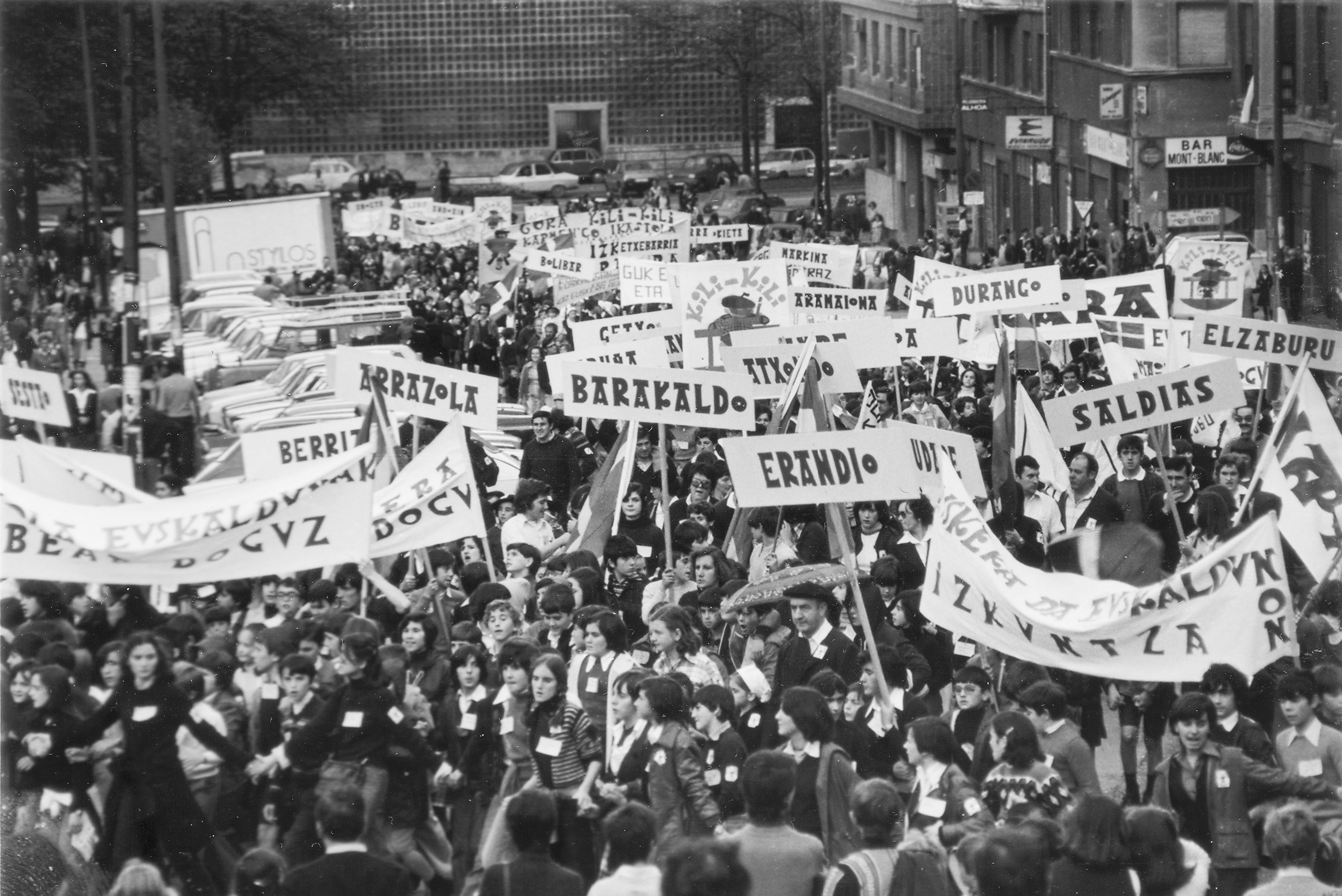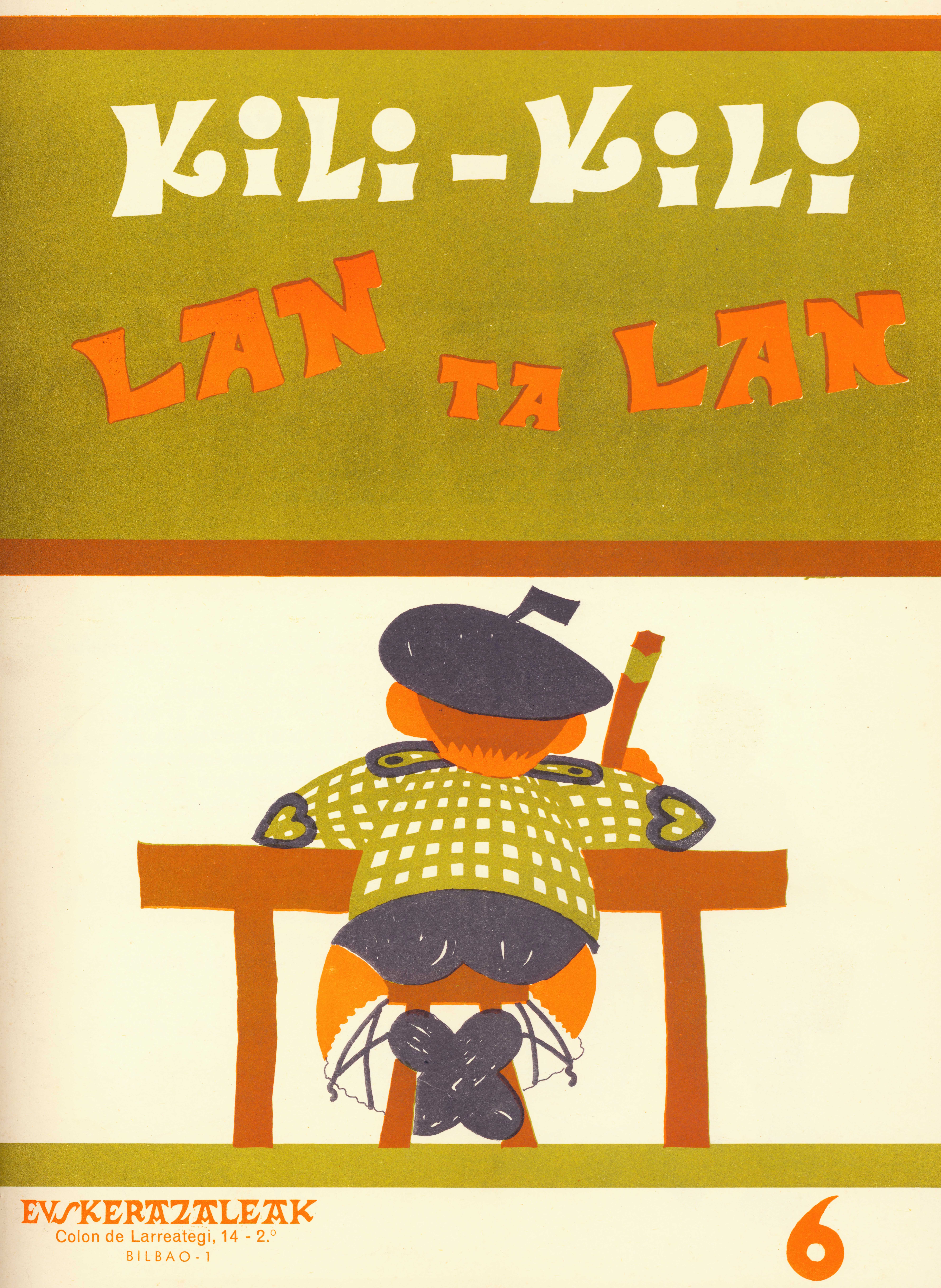Basque ethnography at a glance

Kili-Kili Day. Bilbao, 1977. Deia newspaper.
On 2016 we celebrate Kili-Kili’s 50th anniversary. The fictional character gives his name to a publication created in 1966 intended to report on the catechesis activities at St Anthony’s Parish Church in Bilbao. In every issue of the newsletter, Kili-Kili, a young boy himself, corresponds with children, addressing them in a familiar way and always in Basque. The project was conducted under the umbrella of Claudio Gallastegi, and José Antonio Retolaza stood as the driving force behind it.
News about the periodical soon spread through the network of catechists to all corners of Bizkaia. Basque was kept out of the curriculum at the time, and the attractively designed Lan ta Lan workbooks, emerged by the hand of Lander Gallastegi and under the official recognition of Euskerazaleak Association, aimed at solving the difficulties Basque-speaking children faced to express themselves in reading and writing their mother tongue. The message was clear: Euskera pozgarri (literally, Basque is a source of joy). Far from the discipline and punishment methods of the classroom, Basque language learning was associated with fun and friendly games and practices planned to appeal the taste of the young ones. A number of exciting pursuits provided an added incentive, including hot chocolate parties, competitions, trips or rewards for effort.
The Kili-Kili project expanded its horizons and geographical scope as new proposals came forward: the Lan ta Lan exercise books made way for the Ekin ta Ekin collection; the Kili-Kili Day became a great event; the Kili-Irratia radio broadcast gave voice to Kili-Kili’s friends, boys and girls alike, and boasted its own distinct theme music.
On the occasion of the first Kili-Kili Day, which took place in Bilbao in 1977, a fresh magazine format was introduced. It offered interesting novelties, in particular the publication in Basque of well-known comic series such as Asterix and Obelix, The Pink Panther, Mort and Phil… Beyond Bizkaia, the language was adapted according to the regional variants.
After the implementation of Basque language in primary and secondary education, the Kili-Kili movement continued to organise recreational activities promoting the use of Basque during leisure time. The so-called Kili-jaiak or gatherings were arranged throughout the Basque Country. The Kili-txortak thematic collections, Ikas-zale [Fond of learning], Komiki-zale [Fond of comic books], Historia-zale [Fond of history], Jolas-zale [Fond of playing], Ipuin-zale [Fond of tales], Jainko-zale [Fond of God] and Oporretan [On holiday] among them, supplied children with reading materials in Basque appropriate to their age.
An exhibition located in the Euskal Museoa – Basque Museum (Unamuno Square, Bilbao) shows the history of Kili-Kili and can be visited from March to June 2016. A catalogue and a video are also available.
Igone Etxebarria – Labayru Fundazioa
Translated by Jaione Bilbao – Language Department – Labayru Fundazioa
Further information: Kili-Kili. Euskera pozgarri. Bilbao, 2016.


